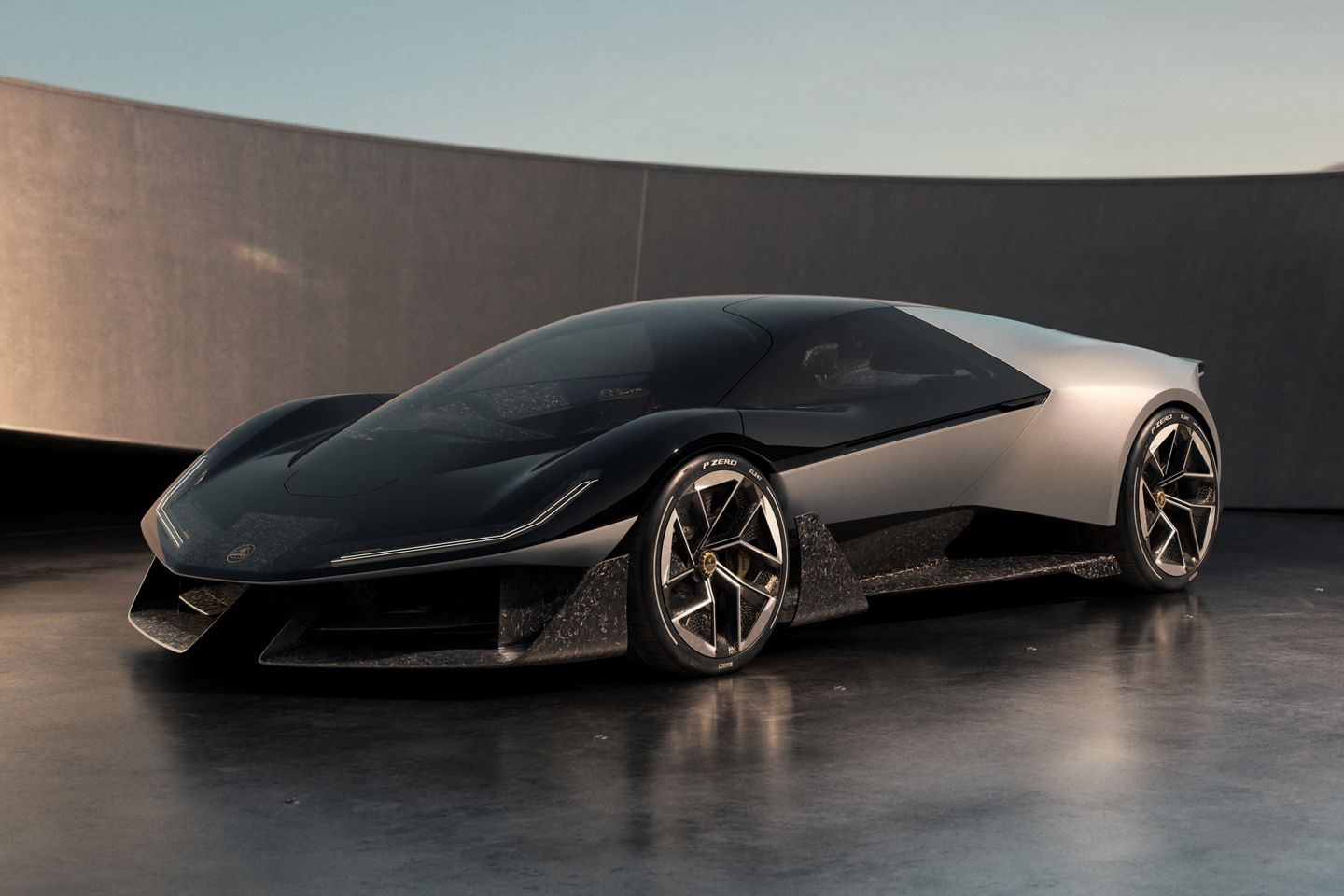This is more like it, right? We’ve had the sensible electric stuff from Lotus (or the money makers, at least), now it’s time to see what a pared-back, lightweight, very fast sports car from a company famed for them could be. Welcome to the Theory 1.
Officially, of course, this is a concept car. The Lotus Theory is what the new design language is called, underpinned by three core principles: Digital, Natural and Analogue. This is the first car designed under the Theory manifesto, hence Theory 1. But the choice of a low, wide, compact sports car silhouette (at 4,490mm it’s just 78mm longer than an Emira) can’t be an accident, what with an EV sports car still said to be on the agenda. Perhaps a roadgoing battery-powered sports car won’t have 1,000hp, a three-seat layout like a McLaren F1 or feature a recycled chop carbon fibre tub, but it’s easy to imagine one that looks a little like this, complete with fancy lighting technology and a minimalist approach to materials.
Furthermore, while this clearly hints at a futuristic Lotus, the past hasn’t been forgotten in creating the Theory 1, with a focus on lightweight construction, innovative solutions and sustainability. ‘Challenge of 10’ was one of the design principles, using just 10 ‘main A-surface materials’ where typically something like a hundred are used. Plenty is recycled already (the rubber, aluminium, glass, polyester, chopped carbon) or can be recycled in future (like the titanium), with all the materials chosen with an eye on being strong and light. The end result being an all-wheel drive, 70kWh, 200mph EV supercar that should weigh less than 1,600kg. Very Lotus.
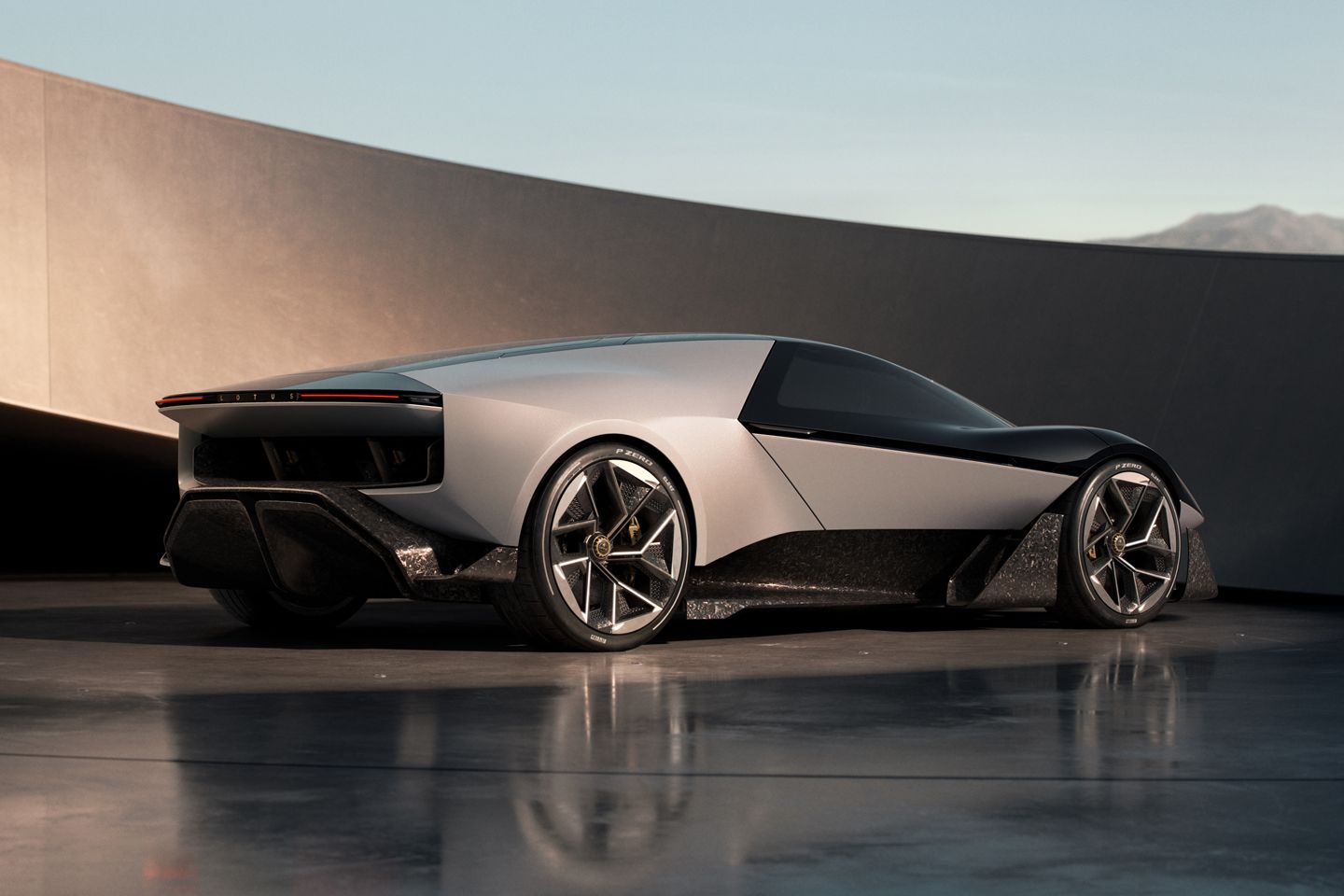
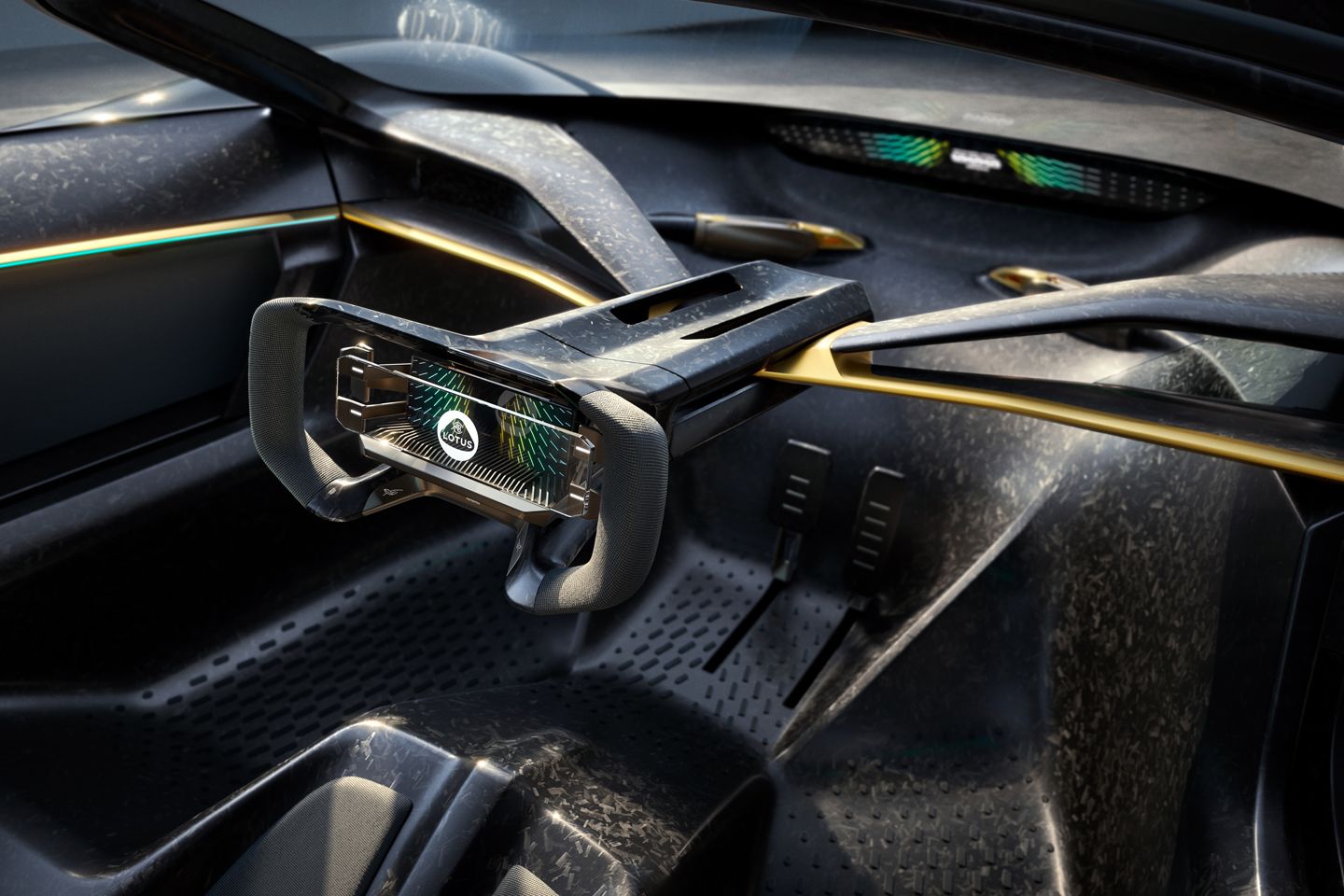
The classic Type 49 has even inspired the Theory 1 to a limited extent: where the old F1 car used the DFV V8 as a stressed chassis member, so the new concept does the same with its motor and battery. It helps save a bit of weight and complexity as there’s no need for a subframe. The centre of gravity is low, because the battery is buried deep, plus the Theory 1 features a host of passive and active aero features to boost performance and efficiency. They include a contoured underfloor, which channels air into the cooling system, side pods that can direct the air to the rear diffuser, and a front nose cone ‘inspired by Lotus’s racing heritage.’ The rear spoiler is active, though clearly that’s not the most dramatic raising part of the Theory 1 – that has to be the reverse opening, wrap over doors. Just when it seemed like all the fancy mechanisms had been done, Lotus does this. As well as looking incredible, they have real-world validity as well, because the design means they can be used in narrow spaces; that plus the fact it makes getting in a whole lot easier given the central driving position.
The interior that will greet a maximum of three occupants is perhaps even more surprising than the outside. Once more the focus is on minimalism, using as little in terms of materials and interfaces as is possible. So the headrests are 3D printed lightweight items, complete with a KEF binaural sound system that means each occupant gets their own soundscape. As well as noise cancelling tech for their own entertainment, the five drive modes of the Theory 1 – Range, Tour, Sport, Individual and Track – will adjust the sound created by the car ‘to deliver a sense of thrill, exhilaration and fun.’ Again that feels like something that could find its way into a production Lotus sports car, particularly with KEF providing the optional sound systems in Emeyas and Eletres.
‘LOTUSWEAR’ is where the Theory 1 interior gets really interesting, however, using pods in the steering wheel and those wild seats (the pedals and wheel move to meet the driver) that will provide haptic feedback. Lotus says it’s an “immersive system that aims to deliver a personalised experience to every occupant in the car, designed to evoke a sense of raw emotion and pure excitement – and further connect them to the road.” So the pads, designed in collaboration with wearable robotics company MotorSkins, will pulse with the direction the driver should turn, and grip the passengers in different ways depending on the mode.
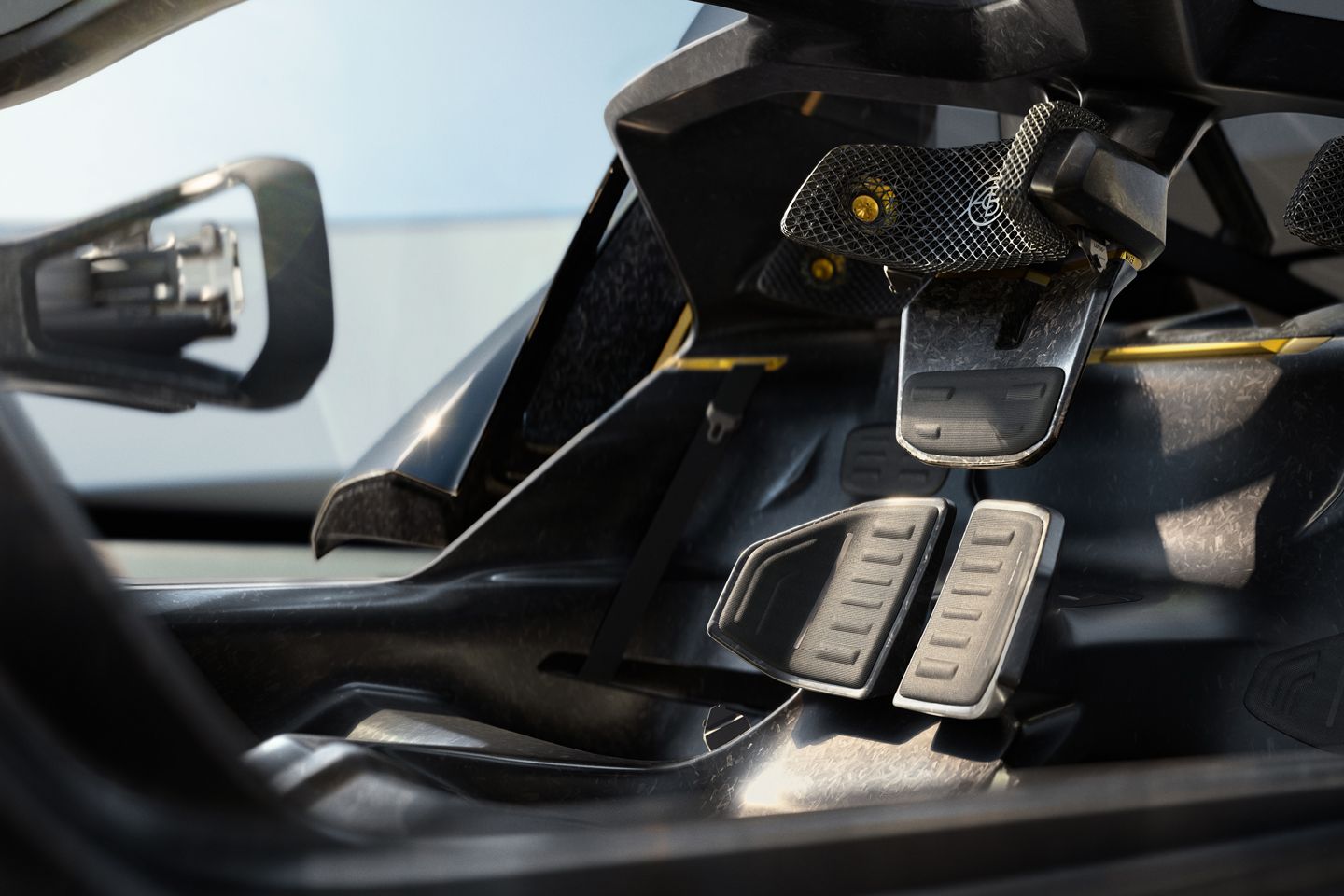
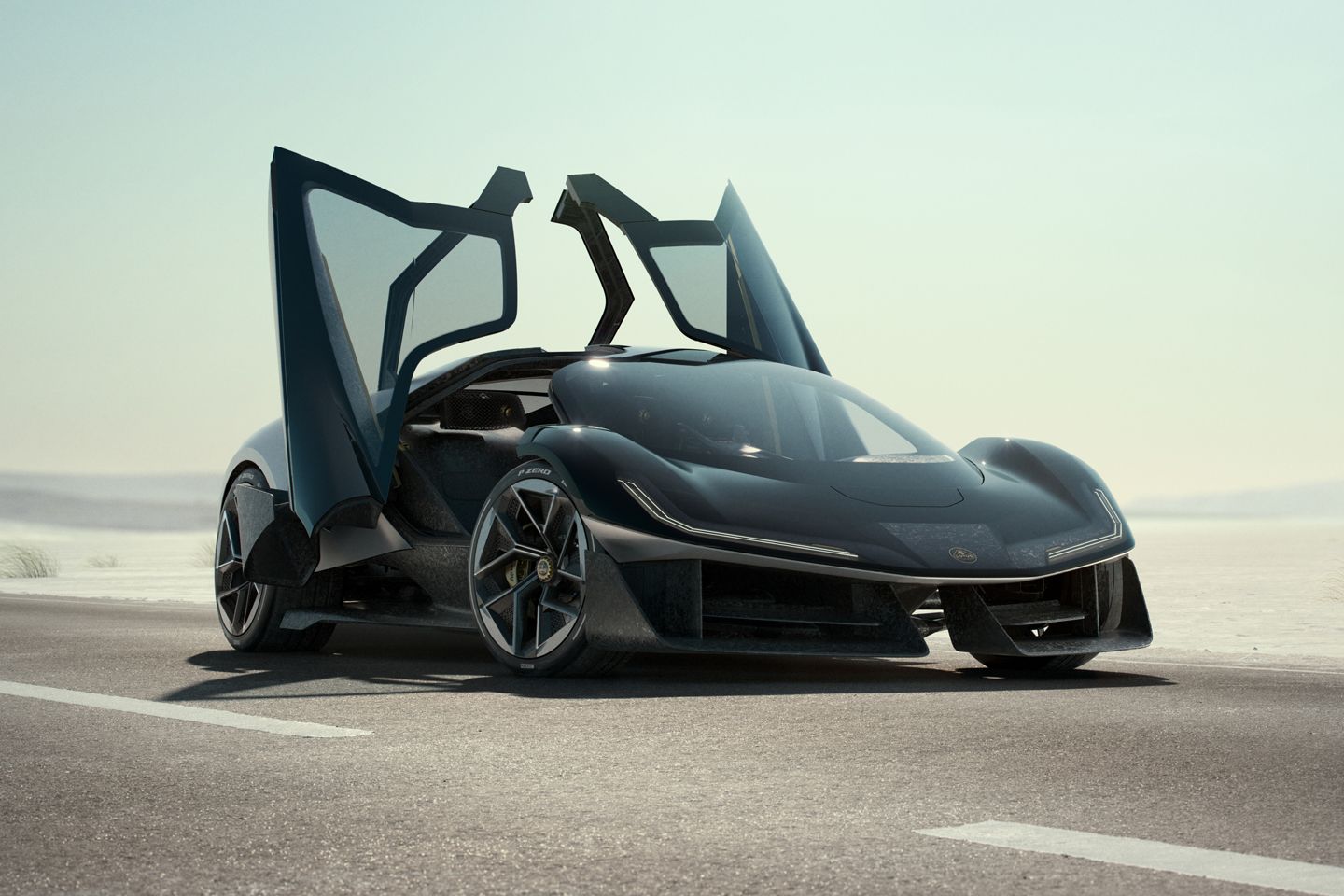
The Technology Line is another element of the LOTUSWEAR interior, which puts all the car’s visible tech in a horizontal opening across the dash – including the autonomous driving features. Once more, while the organic LED tech may seem a little far fetched for now, look at the symmetry of an Eletre’s dash, with similar displays for driver and passenger as well as dash architecture that’s mirrored from one side to the other. It’s not crazy to see how this would be reached from that starting point. The design is such that all the info required by the driver is no further than their periphery, so eyes can stay on the road at all times. The LOTUSWEAR Technology Line is built on the Nvidia Drive platform, said to be capable of trillions of operations per second, therefore ‘enhancing the vehicle’s capabilities through advanced digitalization and adaptive parameters for optimum driving dynamics.’
There are some pleasingly familiar touches to the Theory 1 for those who find that lot a bit overwhelming. The brakes are carbon ceramic, by AP Racing, using a caliper design that again cuts down on the material required; tyres are from the Pirelli P Zero family, here the Elects that offer low rolling resistance and can already be found on the electric Lotuses. Steer-by-wire is a fairly significant departure, though if anyone can make new steering tech work, you’d bank on Lotus.
Ben Payne, Lotus Group’s VP of Design, said: “With Theory 1, we’ve built on everything Lotus has achieved so far in its 76-year history, to push the boundaries for what it means to drive a performance vehicle. We want to demonstrate that you don’t need to compromise – with both digital and analogue capabilities working harmoniously in the future car. In doing this, we are able to bring drivers the best possible immersive driving experience with raw emotion, functionality and connectivity, at the core.” A laudable aim if ever there was one – let’s hope it can translate into a roadgoing reality very soon.

